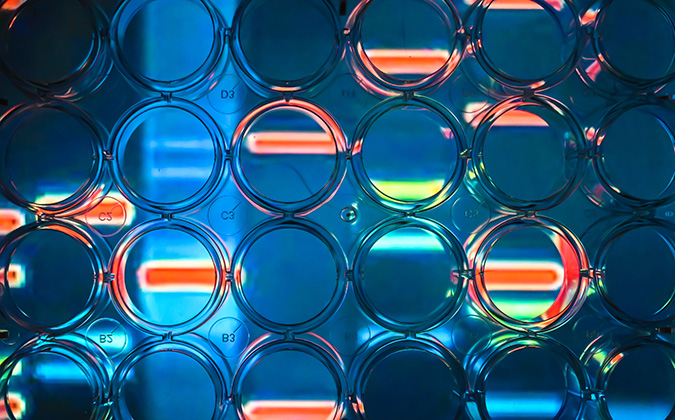
The future of sea louse control on salmon farms: do genetic technologies hold the key?
Genetic technologies could give salmon farmers the crucial tools they need to prevent sea louse infestations, according to researchers.
Writing in the journal Reviews in Aquaculture, the international team of scientists explained how genetics research can reveal why some fish species and individuals are more resistant to common parasites and diseases. This knowledge could transform global aquaculture by paving the way for tools, such as gene editing, more effective selective breeding programs and vaccines, which improve Atlantic salmon’s resistance to lice.
Problems with current sea louse control methods
Atlantic salmon farmers urgently need new strategies to reduce infestations of sea lice, one of the most pressing problems faced by the salmon aquaculture industry, they said. The cost of sea lice to the Norwegian salmon sector alone is at least 7.3 billion kroner (US$ 810 million) a year.
While farmers use a number of delousing methods — such as thermal treatment, water jets and scrubbing — no single method is completely effective. Delousing is necessary to limit the infestations – for both farmed salmon and wild salmon in surrounding waters. But delousing methods themselves can also stress and injure farmed fish.
Boosting Atlantic salmon immune responses to lice through genome editing
There is a need to focus on improving fish’s resistance to lice, the researchers said. And genetics research is key to understand the mechanisms behind resistance.
While the biological relationship between sea lice and their fish hosts is hugely complex, ongoing research is shedding light on the genetic factors that make some individual fish and species of fish more resistant to lice than others. This knowledge could, one day, lead to technologies that enable targeted breeding for resistance.
Coho and pink salmon, for example, cope much better than Atlantic salmon with lice thanks to differences in their immune systems. It may be possible to transfer the genetic basis for this resistance to Atlantic salmon using CRISPR genome editing technologies.
Genome editing could also make it quicker to develop fish stocks with disease resistance, compared with traditional selective breeding. As with conventional approaches, however, care is needed to avoid selecting disease-resistant traits at the cost of other valuable traits, such as growth, and to reduce the risk of inbreeding and loss of genetic diversity.
The industry’s use of genome-edited fish will “need to take place as part of a well-managed selective breeding program (rather than replacing such a program),” advised the researchers. Careful thought and study are needed around the practicalities, ethics and ecological considerations of using genome editing technologies in modern aquaculture breeding programs. Genome edited fish should be prevented from breeding with their wild counterparts, for instance.
Fish feed to repel sea lice
In future, we may also see more technologies that exploit natural chemicals emitted by louse-resistant salmon species, like the Pacific salmon, that repel lice. For example, feed could include ingredients that increase a fish’s production of these repelling chemicals, known as allomones, the authors wrote. Conversely, feed manufacturers could add ingredients that mask kairomones – natural chemicals emitted by salmon that attract lice.
Critically, increased knowledge of genetic differences in how fish produce these louse-repelling and attracting- chemicals will help manufacturers design these feed additives.
Fish cages impregnated with either allomones or kairomones offer another potential solution, they noted. Cages impregnated with kairomones could draw lice to the mesh, which would include a trapping or killing method.
Vaccines against sea lice
Vaccines against parasites are challenging to develop, and especially against sea lice. Encouragingly, however, researchers have recently shown in a lab-based trial that a salmon lice-gut recombinant protein (P33) has strong potential as a vaccine against the salmon louse Lepeophtheirus salmonis.
This vaccine was devised by scientists who followed an approach used to successfully develop a vaccine for cattle against ticks. Both the tick vaccine and the promising results of the salmon louse vaccine were achieved thanks to recent advances in ‘vaccinomics’. This scientific field offers a deeper understanding of the genetic factors and molecular pathways involved in interface between the fish host and its parasite.
However, vaccines against lice may not be 100% effective, the researchers cautioned. Although they may reduce the number of lice per fish and/or the number of eggs produced per louse, they will need to be combined with other measures.
Hopes and considerations for genetic technologies
An important consideration for scientists is the possibility that lice will evolve in response to any new control measures.
And while genetics research offers great hopes for fish farmers, long-term suppression of disease will only be realised through “a collaborative and coordinated multi-disciplinary effort involving scientists working closely with aquaculture industry and government”. They added that such efforts should result in “significant economic impacts for aquaculture sectors, benefit the welfare of production animals and create ecosystem benefits for natural populations of these species.”
.






